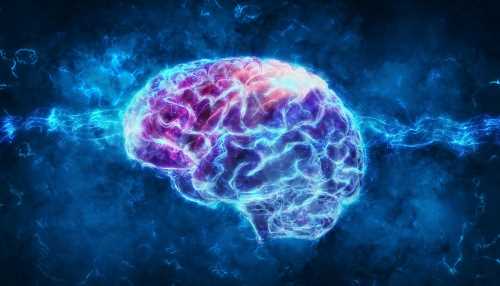In a recent study posted to the bioRxiv* preprint server, researchers fabricated cerebral cortical tissues in three dimensions (3D) and functionally integrated them into a brain lesion in mice.

Background
Tissue engineering of cellularly-diverse human tissues with desired cell functions and architectures is challenging. The architecture of cerebral cortical tissues is layered with layer-specific neurons arranged in vertically oriented columns that deliver high cognition via complex neural circuits. Approaches involving the implantation of brain organoids and neural progenitor (NP) cells have demonstrated limited success in the complete restoration of the injured cranial tissues since the implanted cells could not provide human brain-resembling cell anatomy.
About the study
In the present study, researchers fabricated layered cerebral cortical tissues via droplet-based and piezoelectricity-based 3D printing and functionally integrated the tissues into a brain lesion in mice.
Human-induced pluripotent stem cells (hiPSCs) were differentiated into upper-layer NPs (UNPs) and deep-layer NPs (DNPs) and subsequently printed to form two-layered tissues of the cerebral cortex using the droplet-based printing method. The technique produced scaffold-free and structurally defined soft tissues comprising cells and the ECM (extracellular matrix).
The 3D-printed cells had undergone several processes for maturation, such as terminal differentiation, process outgrowths, and cell migration. They were subsequently implanted into mice brain lesion explants to monitor the integration of cell structures for seven days. Layer-specific neuronal cells, red fluorescent protein (RFP)-labelled UNPs, and unlabelled DNPs were printed to form a 16x8x8 double-layer DRN (droplet network) with width and height of 500 μm and 1000 μm, respectively, were printed layer-by-layer to generate sub-mm scale cubic structures and diversely shaped cm-scale structures.
The hiPSCs were reprogrammed from pluripotent somatic cells of a healthy individual and immunostained. A NIM (neural induction medium) containing SMAD (suppressor of mothers against decapentaplegic) inhibitors SB431542 and LDN193189 was used for hiPSC cell induction into neural ectoderm cells that were subsequently cultured in an NMM (neural maintenance medium) to enable NP generation in vitro.
The cells matured by seeding NPs and using a γ-secretase inhibitor (DAPT)-containing NTM (neural terminal medium). NPs were treated with a cocktail of growth factors, such as EGF, FGF-2 and BDNF, similar to Boissart’s protocol. Further, RT-qPCR (real-time quantitative polymerase chain reaction) gene expression analysis was performed to confirm UN and DN cell identities.
Lab Diagnostics & Automation eBook

Two 8x8x8 DRNs (one containing UNPs and the other containing DNPs) were printed simultaneously to yield a 16x8x8 DRN. Integration between the host and implant was evaluated based on the degree of process outgrowths and neuronal migration from the implant site toward that of the host. The implanted tissue functionality was assessed based on Ca2+ imaging analysis using Fluo-4, and calcium ion signals at the implant/explant interface were recorded to assess calcium oscillation correlations between the host and the implant.
Results
Six-layered cortical structures resembling the human cerebral cortex architecture could be produced by droplet-based 3D printing. NP cells differentiated among printed tissues during post-printing tissue cultures. Of interest, the UNPs and DNPs continued to mature in the host, although they were present in a common growth medium. Tissue production comprising different neuronal types without genetic manipulation lower safety concerns and could be applied to cellularly diverse tissue construction.
Droplet-printed 3D implants could be designed with a similar orientation, dimension, structure, and composition as that of the injured/lost tissues, with 100 μm diameter droplets comprising cells and the ECM. Implanting the printed and layered cerebral cortical tissues into mice brain explants showed structural integration based on implant-to-host process outgrowths and neuronal migration and functional integration based on the host-implant correlated Ca2+ oscillations.
NPs differentiated primarily into deep-layer neurons (DNs) that expressed the CTIP2 deep-layer biomarker. Immunostained cells showed elevated NANOG, OCT4 (Octamer-binding transcription factor 4), and TRA-1-60 (T cell receptor alpha locus) pluripotency marker expression. Upper neuron (UN) morphologically resembled deep-layer neurons (DNs); however, elevated expression of upper-layer markers such as BRN2 and cut-like homeobox (CUX)1, 2, and the middle layer SATB2 (special AT-rich sequence-binding protein 2) marker was observed.
Compared to the hiPSCs, the growth factor cocktail treatment significantly enhanced CUX1 expression in UNPs and UNs by 20-fold and 22-fold, respectively. The paired box protein (PAX6) neural stem cell marker expression was elevated among DNPs, indicative of the successful induction of cortical neurons. Elevated expression of NESTIN (neuroepithelial stem cell protein), TUJ1 (class III-beta tubulin), and SOX2 (sex determining region Y-box 2) expression was observed among the cells, indicating that they were neural. Elevated HNCAM (human neural cell adhesion molecule) neural marker expression was observed in the cortical layer cells, indicative of human-origin neurons.
Conclusion
Overall, the study findings showed that the three-dimensional printing technique could be used for producing tissues with simplified double-layer cerebral cortical columns. The structure and identity of the upper and deeper layers were preserved in vitro post-printing, and process outgrowths and neuronal migration of matured cells from the implant to the host were observed. 3D-printed cortical tissue implantation into mice brain tissue explants showed functional and structural integration of the implant into the host.
*Important notice
bioRxiv publishes preliminary scientific reports that are not peer-reviewed and, therefore, should not be regarded as conclusive, guide clinical practice/health-related behavior, or treated as established information.
- Jin, Y. et al. (2022) "Functional Integration of 3D-Printed Cerebral Cortical Tissue into a Brain Lesion". bioRxiv. doi: 10.1101/2022.10.28.513987. https://www.biorxiv.org/content/10.1101/2022.10.28.513987v1
Posted in: Molecular & Structural Biology | Cell Biology | Life Sciences News
Tags: Anatomy, Biomarker, Brain, Calcium, Cell, Cell Adhesion, Cell Migration, Cortex, Fluorescent Protein, Gene, Gene Expression, Genetic, Growth Factor, Imaging, Implants, in vitro, Induced Pluripotent Stem Cells, Ion, Locus, Molecule, Neuron, Neurons, Organoids, Pluripotency, Polymerase, Polymerase Chain Reaction, Protein, Receptor, Somatic Cells, Stem Cells, Tissue Engineering, Transcription

Written by
Pooja Toshniwal Paharia
Dr. based clinical-radiological diagnosis and management of oral lesions and conditions and associated maxillofacial disorders.
Source: Read Full Article
